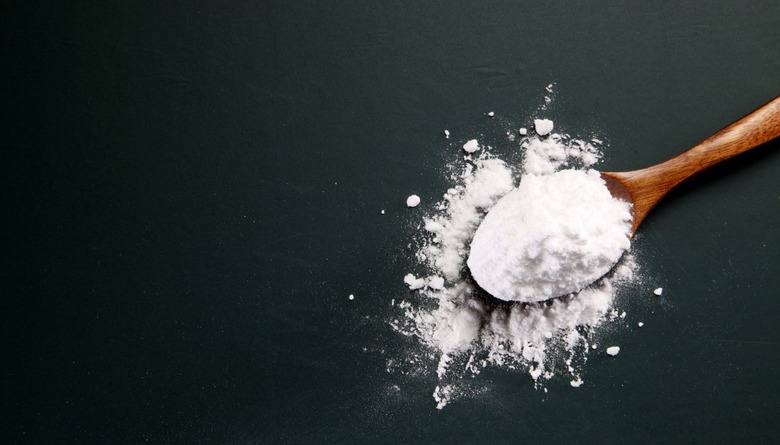What's The Difference Between Baking Soda And Baking Powder?
Both baking soda and baking powder are crucial ingredients when it comes to cooking "quick rise" baked goods like pancakes and muffins, but they're actually both quite different products. So what exactly is the difference between them?
The way that baking soda and baking powder make foods rise involves some chemistry, but it isn't actually too complicated. Baking soda is comprised entirely of sodium bicarbonate, which is a base that releases carbon dioxide when exposed to an acid like vinegar or buttermilk. These bubbles of carbon dioxide are what gurgles up from inside a grade-school science fair "volcano" when baking soda interacts with vinegar. If those bubbles happen to get trapped inside a baked good, it will rise too; this process is called "chemical leavening" (as opposed to biological leavening via yeast or physical leavening via steam).
But the baking soda-acid reaction happens immediately, which isn't ideal for many baking recipes. If you're making cookies and all the CO2 bubbles have dissipated by the time you put the pan in the oven, you're gonna have some flat cookies. This is where baking powder comes into play.
All baking powder contains baking soda, but it also contains two additional chemicals: monocalcium phosphate (which releases CO2 when exposed to water, especially helpful when a recipe doesn't call for anything acidic) and sodium acid pyrophosphate or sodium aluminum sulfate (which release CO2 when exposed to heat). So if you use baking powder, your baked good won't only rise when it's exposed to an acid; it'll also rise when exposed to water, and it'll continue to rise even more when the batter is put into the pan or oven; that's why baking powder is referred to as "double acting." As the batter continues to cook, the bubbles will "set," and voila: a perfectly risen cupcake, like the ones served at these bakeries.
